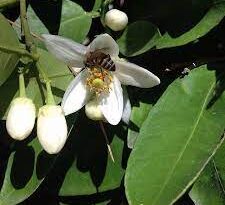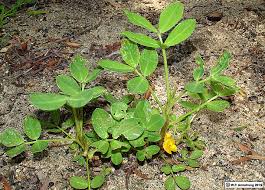The Coconut Fronds: Economic Importance, Uses, and By-Products
Coconut fronds, also known as leaves, are an important part of the coconut tree. These fronds are large and can grow up to 4-6 meters in length. The fronds are composed of a long stem that supports a fan-like structure of leaflets, which are green and glossy in appearance.
The coconut fronds play a crucial role in the photosynthesis process of the coconut tree. They help in converting sunlight into energy and provide the necessary nutrients to the tree. Apart from this, the fronds have several other uses.
One of the most common uses of coconut fronds is for roofing purposes. The fronds are woven together to create a thatched roof, which is commonly seen in tropical regions. The roofs made from coconut fronds are durable, lightweight, and provide excellent insulation against heat and rain.
Coconut fronds are also used for making baskets, brooms, and other household items. The leaflets are woven together to create a sturdy and durable material that can be used for various purposes.
In addition to these uses, coconut fronds have several medicinal properties as well. The fronds are rich in antioxidants and are known to have anti-inflammatory properties. They can be used to treat various ailments such as arthritis, fever, and respiratory problems.
The fronds also have cultural significance in many parts of the world. They are used in traditional ceremonies and festivals to create decorative items such as garlands and other ornaments.
Coconut fronds are a versatile and important part of the coconut tree. They have a wide range of uses, from roofing and household items to medicinal properties and cultural significance. The fronds are an excellent example of how nature provides us with resources that are both sustainable and beneficial.
The Economic Importance and Uses of Coconut Fronds

1. Shelter and Construction: Coconut fronds are traditionally used as roofing material for shelters, huts, and temporary structures in tropical regions. The fronds provide natural insulation and protection from sun, rain, and wind, making them essential for indigenous architecture.
2. Thatching: Coconut fronds are woven or layered to create thatch roofs for traditional buildings and structures. Thatched roofs are durable, waterproof, and environmentally friendly, reflecting local craftsmanship and cultural heritage.
3. Handicrafts: Coconut fronds are crafted into various handicrafts and artisanal products such as baskets, mats, hats, fans, brooms, and decorative items. Skilled artisans weave, twist, and shape coconut fronds into functional and ornamental objects for local use and tourism markets.
4. Landscaping: Coconut fronds are used in landscaping and garden design for creating tropical, coastal, and exotic landscapes. Fronds are arranged as foliage, screens, borders, and accents in gardens, parks, resorts, and public spaces, enhancing aesthetic appeal and biodiversity.
5. Erosion Control: Coconut fronds are employed in erosion control measures such as erosion barriers, slope stabilization, and revegetation projects. Fronds are laid horizontally or vertically to prevent soil erosion, promote vegetation growth, and protect vulnerable landscapes.
6. Livestock Feed: Coconut fronds are utilized as fodder and bedding for livestock such as cattle, goats, and horses. Fronds provide dietary fiber, roughage, and shelter for grazing animals, contributing to animal welfare and sustainable agriculture practices.
7. Organic Mulch: Coconut fronds are shredded or chopped into organic mulch used for moisture retention, weed suppression, and soil improvement in gardens, farms, and landscapes. Mulching with fronds conserves water, reduces evaporation, and enhances soil fertility.
8. Biomass Energy: Coconut fronds are converted into biomass fuel for energy generation in biomass power plants, boilers, and stoves. Fronds are shredded, dried, and burned to produce heat and electricity, reducing reliance on fossil fuels and promoting renewable energy sources.
9. Composting: Coconut fronds are composted to produce organic compost or soil conditioner used for enriching soil fertility and structure in agriculture, horticulture, and gardening. Composting fronds recycles organic waste and reduces reliance on synthetic fertilizers.
10. Animal Bedding: Coconut fronds are shredded or chopped into bedding material for livestock, poultry, and pets. Fronds provide insulation, cushioning, and moisture absorption in animal enclosures, contributing to animal comfort and hygiene.
11. Environmental Conservation: Coconut fronds are used in environmental conservation efforts such as coastal restoration, dune stabilization, and mangrove rehabilitation. Fronds are planted or placed to mitigate coastal erosion, protect habitats, and restore natural ecosystems.
12. Traditional Medicine: Coconut fronds are used in traditional medicine systems for their medicinal properties and therapeutic benefits. Extracts or infusions of fronds are consumed or applied topically to treat ailments such as fever, inflammation, and skin disorders.
13. Art and Culture: Coconut fronds feature prominently in art, culture, and rituals of coconut-growing communities. Fronds are used in dances, ceremonies, festivals, and symbolic rituals, reflecting the spiritual, social, and cultural significance of coconut palms.
14. Soil Conservation: Coconut fronds are utilized in soil conservation practices such as contour hedgerows, terracing, and check dams. Fronds are strategically placed to slow down water runoff, reduce soil erosion, and promote soil moisture retention.
15. Firewood and Charcoal: Coconut fronds are harvested for firewood and charcoal production in rural areas where access to fuel sources is limited. Fronds are dried, stacked, and burned for cooking, heating, and charcoal-making purposes, providing energy for household use.
16. Floral Arrangements: Coconut fronds are incorporated into floral arrangements and decorations for weddings, events, and ceremonies. Fronds are used as foliage, accents, or backdrops in floral designs, adding a tropical and exotic touch to floral displays.
17. Pest Control: Coconut fronds are used in pest control methods such as companion planting, trap cropping, and insect repellent applications. Fronds emit natural compounds or provide habitat for beneficial insects, birds, and reptiles that help control pests and maintain ecological balance.
Read Also: How to Control Feeding Struggle among Fishes in the same Pond
The Products and By-products That Can Be Derived From Coconut Fronds

1. Thatch Roofing Material: Coconut fronds are harvested and processed into thatch roofing material for traditional buildings, shelters, and structures. Fronds are bundled, tied, and layered to create waterproof and durable thatched roofs that provide insulation and protection from the elements.
2. Handicrafts: Coconut fronds are woven, braided, or twined into handicrafts such as baskets, mats, hats, fans, brooms, and decorative items. Skilled artisans use traditional weaving techniques to transform fronds into functional and aesthetic products for local use and trade.
3. Landscaping Products: Coconut fronds are used in landscaping products such as fencing, screening, edging, and mulching materials. Fronds are arranged and installed to create natural barriers, borders, and accents in gardens, parks, resorts, and public spaces.
4. Livestock Bedding: Coconut fronds are shredded or chopped into bedding material for livestock such as cattle, goats, and horses. Fronds provide cushioning, insulation, and moisture absorption in animal enclosures, contributing to animal comfort and welfare.
5. Biomass Fuel: Coconut fronds are processed into biomass fuel for energy generation in biomass power plants, boilers, and stoves. Fronds are shredded, dried, and burned to produce heat and electricity, reducing reliance on fossil fuels and promoting renewable energy sources.
6. Organic Mulch: Coconut fronds are shredded or chopped into organic mulch used for moisture retention, weed suppression, and soil improvement in gardens, farms, and landscapes. Mulching with fronds conserves water, reduces evaporation, and enriches soil fertility.
7. Compost Material: Coconut fronds are composted to produce organic compost or soil conditioner used for enriching soil fertility and structure in agriculture, horticulture, and gardening. Composting fronds recycles organic waste and reduces reliance on synthetic fertilizers.
8. Animal Feed Additive: Coconut fronds are incorporated into animal feed as a dietary fiber and roughage source for livestock, poultry, and pets. Fronds provide digestive stimulation, bulk, and texture in feed formulations, supporting animal health and nutrition.
9. Soil Erosion Control: Coconut fronds are employed in soil erosion control measures such as contour hedgerows, terracing, and check dams. Fronds are strategically placed to slow down water runoff, reduce soil erosion, and promote soil conservation in agricultural landscapes.
10. Firewood and Charcoal Production: Coconut fronds are harvested for firewood and charcoal production in rural areas where access to fuel sources is limited. Fronds are dried, stacked, and burned for cooking, heating, and charcoal-making purposes, providing energy for household use.
Read Also: 10 Medicinal Health Benefits Of Jakhya (Cleoma viscosa)
Frequently Asked Questions (FAQs) About Coconut Fronds

1. What are coconut fronds?
Coconut fronds are the large, fan-shaped leaves of the coconut palm (Cocos nucifera) tree, native to tropical regions. Fronds consist of a long, sturdy petiole or stem with numerous leaflets or blades radiating from the central axis.
2. How are coconut fronds used in construction?
Coconut fronds are used as roofing material for traditional buildings, shelters, and structures in tropical regions. Fronds are woven, layered, or tied to create thatched roofs that provide insulation and protection from sun, rain, and wind.
3. What handicrafts are made from coconut fronds?
Coconut fronds are crafted into various handicrafts such as baskets, mats, hats, fans, brooms, and decorative items. Skilled artisans weave, braid, or twine fronds into functional and ornamental products for local use and trade.
4. How are coconut fronds utilized in landscaping?
Coconut fronds are used in landscaping for fencing, screening, edging, and mulching purposes. Fronds are arranged and installed to create natural barriers, borders, and accents in gardens, parks, resorts, and public spaces.
5. Are coconut fronds suitable for animal bedding?
Yes, coconut fronds are used as bedding material for livestock such as cattle, goats, and horses. Fronds provide cushioning, insulation, and moisture absorption in animal enclosures, contributing to animal comfort and welfare.
6. Can coconut fronds be used as biomass fuel?
Yes, coconut fronds are processed into biomass fuel for energy generation in biomass power plants, boilers, and stoves. Fronds are shredded, dried, and burned to produce heat and electricity, reducing reliance on fossil fuels.
7. How do coconut fronds contribute to soil erosion control?
Coconut fronds are employed in soil erosion control measures such as contour hedgerows, terracing, and check dams. Fronds slow down water runoff, reduce soil erosion, and promote soil conservation in agricultural landscapes.
8. Are coconut fronds used in composting?
Yes, coconut fronds are composted to produce organic compost or soil conditioner used for enriching soil fertility and structure in agriculture, horticulture, and gardening. Composting fronds recycles organic waste and reduces reliance on synthetic fertilizers.
9. What role do coconut fronds play in animal feed?
Coconut fronds are incorporated into animal feed as a dietary fiber and roughage source for livestock, poultry, and pets. Fronds provide digestive stimulation, bulk, and texture in feed formulations, supporting animal health and nutrition.
10. How are coconut fronds utilized in firewood and charcoal production?
Coconut fronds are harvested for firewood and charcoal production in rural areas where access to fuel sources is limited. Fronds are dried, stacked, and burned for cooking, heating, and charcoal-making purposes, providing energy for household use.
Read Also: Hydroponics Guide 101: All You Need to Know About it









